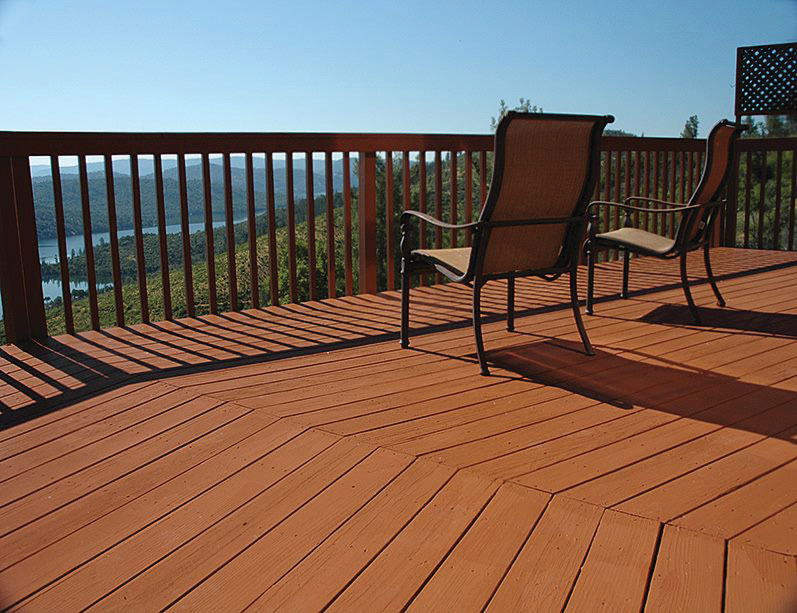Stain Deck Like a Pro: Essential Steps for a Perfect Finish
Stain Deck Like a Pro: Essential Steps for a Perfect Finish
Blog Article
A Comprehensive Guide to Different Types of Deck Staining Techniques for Ultimate Security and Aesthetic Appeals
In the world of deck maintenance, the art of staining stands as a crucial step towards both maintaining the honesty of your outside space and boosting its visual allure. As we navigate via the intricate globe of deck staining strategies, one begins to value the nuanced techniques that can make all the difference between a sub-par surface and a flawless one.
Recognizing Different Kinds Of Spots
Numerous kinds of spots are typically utilized in the procedure of deck discoloration to achieve different aesthetic and protective results. On the other hand, semi-transparent spots use an equilibrium in between shade improvement and protection, enabling some timber grain to reveal with.
Toners include a hint of color to the wood while providing minimal protection, making them ideal for more recent decks with much less wear. Comprehending the qualities and benefits of each type of stain is crucial for attaining the wanted look and sturdiness for your deck.
Selecting the Right Spot Color
When considering the aesthetic appeals of your deck staining task, the selection of discolor color plays a crucial role in enhancing the protective top qualities of the picked tarnish type (Water-Based Stains). The color you choose can dramatically impact the general look of your deck, along with its capability to withstand the components in time
When selecting a stain shade, it's important to consider the existing color design of your home's outside. Harmonizing the deck tarnish with the general aesthetic of your property can develop a aesthetically enticing and cohesive outside space. Furthermore, the shade of your deck stain can influence the temperature level of the deck surface; darker colors often tend to absorb even more warmth, while lighter colors reflect sunshine and stay cooler.
Additionally, the sort of wood you are discoloring will certainly additionally impact just how the stain color shows up. Various timber species can connect with the discolor in different means, potentially changing the last shade. It's advisable to evaluate the discolor on a tiny, inconspicuous area of the deck to make sure the shade ends up as wanted prior to waging the entire job.
Preparing Your Deck for Discoloration
To ensure a long-lasting and successful deck staining project, extensive preparation of the deck surface is important. Begin by cleaning the deck thoroughly to remove dirt, grime, mold, and any kind of old finish or stain.
Evaluate the deck for any kind of damaged or rotten boards that need to be changed. Hammer down any kind of extending nails and sand any rough areas to make sure a smooth surface area for discoloration. Inspect for any loosened railings or steps that might require tightening up or repair service.
Once the deck is tidy, dry, and in excellent repair work, consider using a timber brightener to bring back the deck's natural shade and open up the timber pores for far better discolor infiltration. Safeguard any kind of close-by plants, furnishings, or surface areas with plastic sheet prior to continuing with the staining procedure. Correct preparation is crucial to achieving a professional-looking surface and maximizing the durability of your deck stain.
Using Discoloration With Various Methods
For a professional and perfect surface, the method of applying discolor plays a crucial function in improving the look and resilience of your deck. There are numerous techniques you can use to make sure a reliable application of tarnish.
Brushing is a standard approach that permits precision and control over the amount of discolor used. It is excellent for intricate areas and reaching between deck boards Beautiful Deck (Water-Based Stains). Rolling is a quicker alternative, covering bigger area successfully. Nonetheless, back-brushing after rolling is advised to level the discolor and work it into the wood for better penetration.
Spraying is another preferred technique, providing speed and convenience helpful site of application, particularly for huge deck locations. Whichever technique you select, guaranteeing appropriate preparation and adhering to producer standards will aid achieve a resilient and gorgeous tarnish finish on your deck.

Maintaining and Re-staining Your Deck
Proper maintenance and prompt re-staining are necessary for protecting the charm and longevity of your deck. Regular upkeep jobs consist of sweeping off debris, cleansing with a deck cleaner, and checking for any type of signs of wear or damages. Dealing with problems without delay can protect against extra significant problems in the future. When it concerns re-staining your deck, the useful reference regularity depends on different factors such as the sort of tarnish made use of, the climate in your area, and just how much wear and tear your deck experiences. Normally, it is recommended to re-stain your deck every 2-4 years to maintain its security and aesthetics.
Before re-staining, make certain the deck is tidy, completely dry, and free of any previous stain deposit. Select a top notch stain that fits your deck's material and supplies the wanted degree of protection.
Final Thought
In final thought, understanding the different kinds of deck discolorations, selecting the best color, properly preparing the deck, applying discolor with various methods, and preserving and re-staining the deck are necessary actions for best defense and visual appeals. By complying with these steps, you can ensure that your deck continues to be in top problem for several years to find.
Furthermore, the shade of your deck discolor can affect the temperature level of the deck surface area; darker colors often tend to take in even more heat, while lighter colors reflect sunshine and stay cooler.
It's a good idea to test the stain on a little, low-profile location of the deck to make sure the color transforms out as wanted before continuing with the whole project.

Report this page